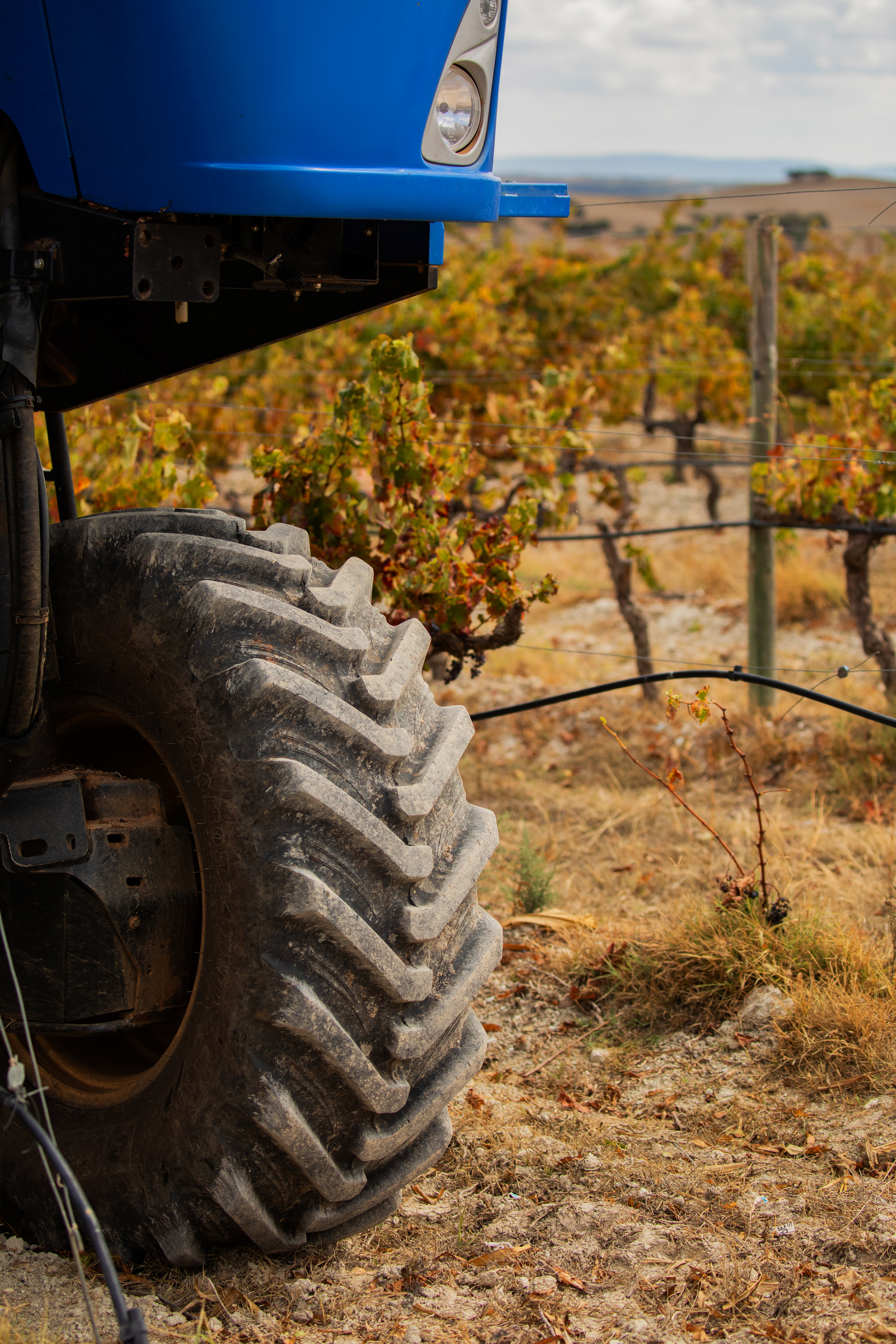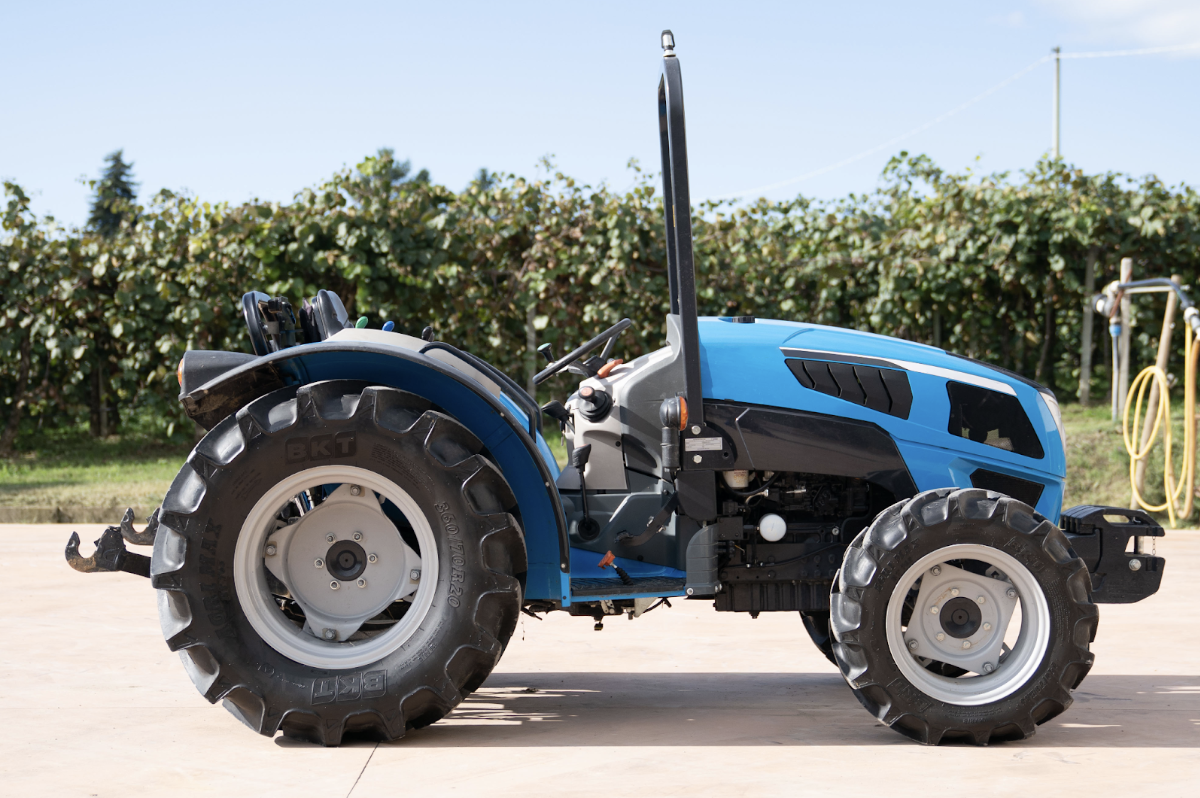.jpg)


In the world of isodiametric tractors, there are two main approaches to steering: front steering wheels or a central articulated frame.
Some new-generation models combine both, in a hybrid approach that makes it possible to:
-
increase agility when passing between rows
-
reduce the number of maneuvers
-
limit soil compaction
-
ensure even traction distribution
-
improve stability on sloping terrain
The adoption of four-wheel steering systems, similar to those used in telehandlers, represents one of the most effective innovations in terms of maneuverability.
The rear wheels can:
- steer in counter-phase to the front wheels for tighter turns
- move in “crab mode” to simplify loading and unloading operations
- steer with a delay to maintain the trajectory of towed implements
Alternatively, some tractors integrate a hydraulically steered rear axle, combined with a high-angle front axle. This combination ensures excellent maneuverability both in rows and in farmyards.
Advanced steering technologies are not limited to tractors alone: they are also found in farm centers, where space optimization is equally crucial.
In self-propelled agricultural machines used for material handling, loading, and unloading, four-wheel steering systems have become increasingly common, if not essential.
Particularly advanced are self-propelled silage-mixer wagons, which today offer up to three selectable steering modes depending on the operation:
- Front-wheel steering for road travel
- Four-wheel steering to drastically reduce the turning radius
- Crab mode, ideal for optimizing lateral maneuverability and reducing soil compaction
These solutions are designed for those who work daily in dynamic and complex environments, where even a single maneuver can make the difference in terms of time, safety, and efficiency.
_(1).jpg)